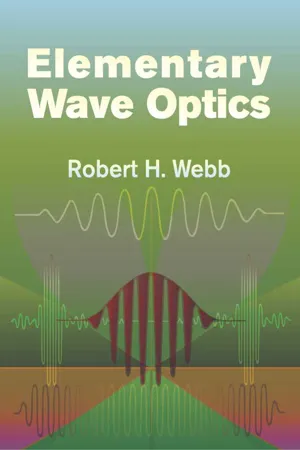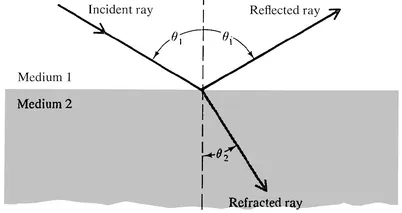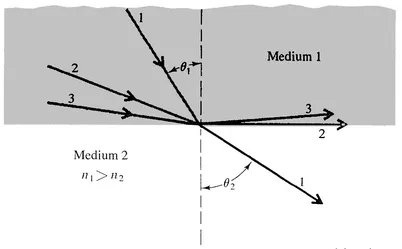
- 288 pages
- English
- ePUB (mobile friendly)
- Available on iOS & Android
Elementary Wave Optics
About This Book
This undergraduate textbook presents thorough coverage of the standard topics of classical optics and optical instrument design; it also offers significant details regarding the concepts of modern optics. Its survey of the mathematical tools of optics grants students insights into the physical principles of quantum mechanics.Two principal concepts occur throughout: a treatment of scattering from real scatterers (leading to Huygens' principles, diffraction theory, the index of refraction, and related topics); and the difference between coherent and noncoherent wave phenomena. Examinations of superimposition of field amplitudes and detection of intensities recur throughout the book.This highly physical approach is augmented by extensive appendixes of mathematical details. Two sets of problems appear at the end of each chapter and form a crucial part of the exposition. One set consists of well-tested problems with detailed solutions, paired with similar problems without supplied solutions. The other set contains short, easier exercises, filling the more conventional role of end-of-chapter problems.
Frequently asked questions
Information
1
Geometrical optics: summary



Table of contents
- Title Page
- Copyright Page
- Table of Contents
- Preface
- 1 - Geometrical optics: summary
- 2 - Waves: description
- 3 - Superposition: reflection, standing waves, group velocity
- 4 - Electromagnetic waves, energy and momentum, doppler effect
- 5 - Scattering: index of refraction
- 6 - Polarized light
- 7 - Interference
- 8 - Interference from two sources
- 9 - Interference from many sources
- 10 - Multiple images: Interference of light from an extended source
- 11 - Diffraction
- 12 - Modern optics
- Appendix A: - Miscellaneous mathematical notes
- Appendix B: - Derivation of the wave equation
- Appendix C: - String
- Appendix D: - Summary on electricity and magnetism—derivation of electromagnetic wave equation
- Appendix E: - Resonance
- Appendix F: - Index of refraction—macroscopic approach
- Appendix G: - Fresnel diffraction
- Appendix H: - Fourier transforms
- Bibliography
- Solutions to selected problems
- Index